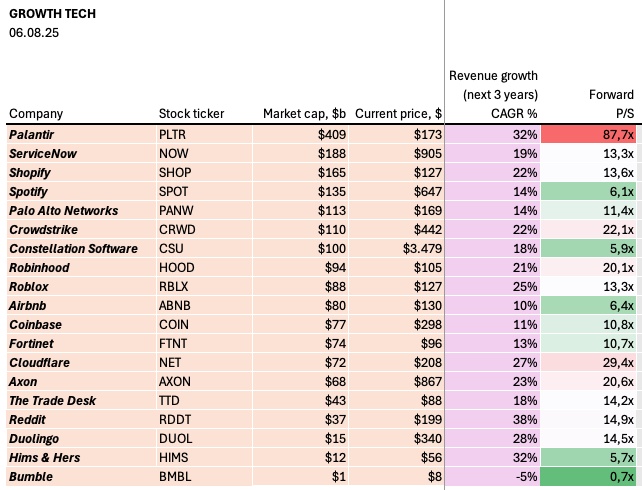Reading time: approx. 9 minutes
Analysts enjoy a special status on the markets. Their price targets move shares, their assessments make the headlines and their models are used in fund decisions. However, those who use their forecasts without critically examining them often overlook the fact that analyst reports are not objective market barometers - but products with their own interests, assumptions and systematic distortions.
Empirical evidence shows: Analysts are surprisingly often wrong. A 20-year meta-study by the University of Iowa found that, on average, only around 47% of share price targets are achieved within twelve months. Even more clearly, the hit rate for the most optimistic forecasts was less than 30% in some cases. The much-cited EPS forecast is not infallible either - according to Refinitiv data, consensus estimates at the end of the year deviate on average by 8-12% from the actual result.
The problem lies less in the methodology than in the system. The majority of analysts work at investment banks, which also support issues or maintain business relationships with the analyzed companies. Negative ratings are rare there. According to FactSet, of over 14,000 recommendations in the S&P 500 universe, over 55% were recently "buy" and only 6% "sell" - an imbalance that can hardly be explained by optimism alone.
Example 1: $AMZN (+2.53%) (Amazon)
Before the dotcom bubble, the average price target for Amazon in March 2000 was around USD 100 - a few weeks later, the share price fell by 90 %. Even in 2014, when margins were shrinking and analysts were basing their models on short-term profits, 80% of the ratings were "hold" or "sell". Those who invested against the consensus back then multiplied their capital by 2020.
The pattern: analysts extrapolate the present into the future. In boom phases they overestimate growth, in crises they underestimate recovery.
Example 2: $TSLA (+3.42%) (Tesla)
In 2020, Goldman Sachs rated Tesla with a price target of USD 780 - when the share was at 400. Six months later, it had tripled. In 2022, many firms lowered their targets to below USD 200 after the share price had already fallen sharply. So the adjustment came after the movement. Analysts react, they rarely anticipate.
Example 3: $SPOT (-0.36%) (Spotify)
In 2022, major banks such as Morgan Stanley issued share price targets of USD 100 - on the grounds that the streaming model would remain permanently loss-making. Shortly afterwards, Spotify actually improved its gross margin and became operationally profitable. The share price doubled within a year. The estimates were correct, only the time horizon was wrong: analysts usually model twelve months, investors think five years.
Why this is the case
Analysts are caught between two worlds:
Sales and customer loyalty - their primary job is to provide institutional investors with information, not private investors. Their reports are part of a service designed to generate trust - not necessarily returns.
Reputation protection - If you deviate too much, you risk performing poorly in the rankings of the major data services (Institutional Investor). This is why many forecasts are within a narrow consensus band.
This leads to a herd instinct: the more analysts call a stock a "buy", the less anyone wants to deviate. Conversely, reputational pressure has a dampening effect in times of crisis - nobody wants to become bullish again too soon. As a result, analysts are often right in their diagnosis but wrong in their timing.
The most important companies and voices
A few companies dominate the global analyst landscape. In the English-speaking world, these include
- Goldman Sachs, Morgan Stanley, J.P. Morgan, Bank of America - with a strong weighting in institutional research.
- UBS, Barclays, Deutsche Bank, Credit Suisse (now integrated into UBS) - often with very sector-specific analyst teams.
- Morningstar - independent, with a focus on fundamental valuation (fair value models, "economic moat" approach).
- CFRA Research, Argus, Jefferies, Wedbush - smaller, but often more contrarian firms with a higher hit rate for second-line stocks.
- Bernstein Research is regarded as particularly analytical and quantitative - often with clear deviations from the mainstream.
Platforms such as TipRanks or Refinitiv StarMine, which track the performance of individual analysts over the years and make it assessable, offer an interesting addition. This shows, for example: The top 10% of analysts slightly outperform the market - the remaining 90% do not.
Which key figures really count
The classic recommendation ("buy", "hold", "sell") is striking, but superficial. The quantitative key figures in the background of the models are more meaningful. Some of them deserve more attention than the headlines:
EPS revision rate - measures how much earnings estimates are adjusted over time. Positive revisions correlate with share price increases.
Target price gap - the difference between the current share price and the average target price. A gap of over 20 % looks attractive, but is only relevant if the estimates remain stable.
Dispersion of estimates - wide spread between analysts indicates uncertainty; narrow range signals consensus (and therefore less potential for surprises).
Valuation spread - ratio between highest and lowest price target. Wide spreads are often found with disruptive companies (e.g. $TSLA (+3.42%) , $PLTR (+4.13%) ).
Earnings surprise rate - measures how often a company beats analysts' estimates. Companies with repeated "beats" (e.g. $V (+0.26%) , $ASML (+2.15%) ) enjoy a structural valuation premium.
These metrics are not a substitute, but a realistic corrective. While ratings contain emotion, ratios provide evidence.
Let's take $INOD (-0.32%) (Innodata). In 2022, the average price target was still USD 3, hardly anyone saw potential. When the AI hype began, the same companies revised their models - now the fair value was USD 9. The share price jumped to USD 13, not because the business tripled overnight, but because the analysts subsequently adjusted their assumptions.
Similarly with $NU (+2.06%) (Nu Holdings): Long labeled as an overpriced fintech, the tone changed as soon as profitability became apparent.
These examples show: Analysts are heavily calibrated with hindsight. The real opportunities lie where there is still no coverage or where the narrative changes.
Analysts provide valuable data points, but no direction. Their reports can help lay a foundation - but they are no substitute for your own assessment. It is crucial to understand how their models are created and what assumptions or conflicts of interest are at work in them.
Empirically, it can be stated: Analysts offer solid fundamental data on average, but weaken in terms of forecast quality and timing. The best strategy is therefore to use their analyses as input - but to consistently make your own judgment.
In other words: analysts draw the map, but each investor must determine the path for themselves.
How do you use analyst estimates? As a guide, as a counter-indicator or not at all?


















